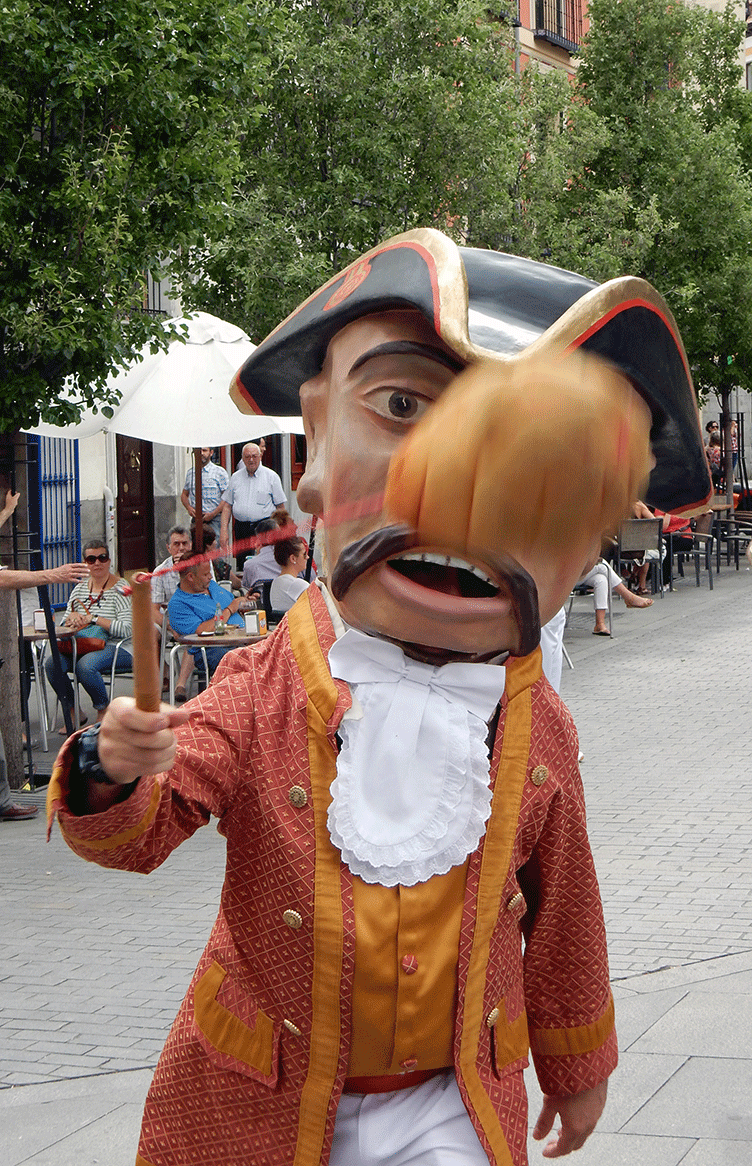Reggia di Caserta
Foolish me. I thought the Royal Palace we visited earlier in Naples was lavish enough to suit the needs of the royal court, but Charles III (his later Spanish title) (1716-1788) had yet more grandiose ideas. He desired a new site for his capital, one farther removed from the coast to prevent invasions by sea and, most importantly, one with a palace to rival Versailles.
In 1752, Charles commissioned architect Luigi Vanvitelli (1700-1773) for the massive project, Reggia di Caserta, on land to the east of Naples. The result: 1,200 rooms on five floors making the palace 118 feet tall. Almost 500,000 square feet occupying 11 acres. The architect was able to employ the finest materials – travertine from Bellona; bricks from Capua; gray marble from Mondragone; white marble from Carrara. Immense single blocks of lava stone from Trapani were used for each step of the grand stairway that divides into two parallel flights of stairs of 116 steps guarded by two white marble lions.
But Charles as King of Naples never got to reside in his dream palace because he had to move on to a bigger role as King of Spain. So the incredible digs were left for his son, Ferdinand (1751-1825), and his wife, Maria Carolina of Austria (1752-1814), to finish. If sibling rivalry existed, Maria Carolina should have been more than pleased with the palace. Her sister, Maria Antoinette (1755-1793), spent much of her time at Versailles with her husband, King Louis XVI of France (1754-1793).
Maria Carolina was a proponent of enlightened absolutism until she became alarmed by the revolutionary ideas spreading through France. She began work in earnest to transform Naples into a police state. The abrupt end to her sister’s life intensified and helped justify those efforts. Needless to say, this did not enhance her popularity, but no matter. The monarchs soon had to flee as Napoleon conquered their kingdom; although Ferdinand would return later with assistance from Austria.
Enough politics.
In addition to keeping Vanvitelli occupied until the end of his life with finishing out the royal palace, Ferdinand and Maria Carolina enlisted him to design a Royal Park worthy of such a palace. The queen’s English garden covers 30 acres. The king’s mile-long fish pond provided a stage for him to float elaborate mock naval battles for the entertainment of his guests. A grand cascade of water was installed on the summit of a hill opposite the palace. Oh, and a 24-mile aqueduct, a hydraulic architectural feat, was built to keep the water flowing.
UNESCO/NHK Video
Walking a couple of miles exploring all the secret gardens filled with sculpture and fountains had been our plan when we hopped aboard for the short train ride from Naples. But, alas, the beauty of the palace and grounds of Caserta had attracted the attention of another. A film production company.
Not only were crew members scurrying around installing special lighting, rearranging furniture and adding props (see the sculpture of the man brandishing his sword astride a bear with a double-headed eagle crest on the door behind him) inside the palace, but they were filming a scene on the grounds. Meaning we were not invited. The scene we saw filmed involved a huge cast gathered to greet the important occupants of an arriving coach (no photos allowed). There are several photos above of cast members scurrying through a courtyard of the palace to prepare for their next scenes.
The film? The crest indicates a period piece focusing on Russian royalty. But the production is hardly the first to take advantage of the sumptuous palace. Think Queen Amidala’s royal palace on Naboo in Star Wars Attack of the Clones and The Phantom Palace. Angels and Demons directed by Ron Howard in 2009 and Mission Impossible 3 with Tom Cruise in 2006. And then Richard Dreyfus portrayed architect Vanvitelli himself in Caserta Palace Dream.
In 2017, Stephen Spielberg found the grand stairway ideal for a parade of cardinals for his film, still in production, The Kidnapping of Edgardo Mortara.
And one need not starve. We dropped in Osteria da Miducci and ordered eggplant and pasta before the table of locals next to us began receiving their heaping platters of seafood. Our freshly made pasta was perfect, but envy surfaced. Not sure I could have cleaned it down to the bones the way the presiding gentleman with the Godfather voice did, but I would have ordered his whole fried fish, which arrived plated perched upright on its fins as though it swam there voluntarily, for the snapshot alone.
May 14, 2020, Update: And the filming was for Hulu’s “The Great” premiering on May 15.
















































